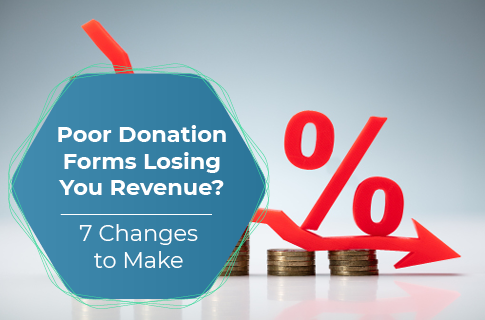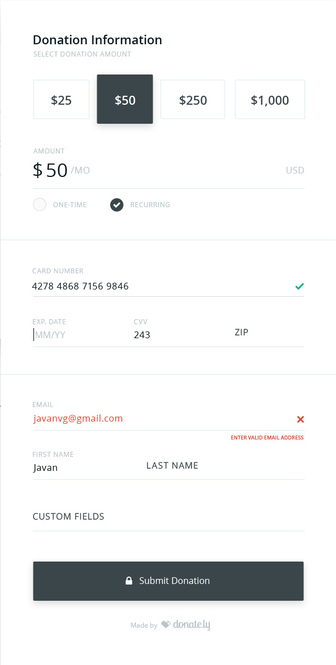A church youth group is a powerful way for your church’s teens to find mentors, establish self-confidence and social awareness, and become more deeply rooted in their faith.
To unlock these social, interpersonal, and moral benefits, youth groups can engage in all kinds of activities, from volunteering and Bible studies to purely social gatherings. However, some of the most enriching programming like camps and mission trips can be expensive.
While some members may be able to pay for these activities with help from their parents, you want to ensure everyone in your group has an equal opportunity to participate regardless of socioeconomic status.
By holding a youth group fundraiser, you can expand opportunities to more teens while also demonstrating the importance of a strong work ethic.
Creating the right fundraising strategy for your youth group may feel challenging, but we’re here to help. At ABC Fundraising, we’ve helped more than 10,000 churches across the country to raise millions of dollars in support of their work. With this experience, we’ve seen firsthand the tactics youth groups are using to fundraise successfully.
Consider one of the following fundraiser recommendations to generate needed revenue for your youth ministry:
- Sell branded merchandise.
- Hold a “yard” sale.
- Host a 5k or walk-a-thon.
- Sell gourmet food items.
By implementing one (or more!) of these ideas, your youth group will be able to secure the necessary funds for your next trip—and have fun while doing so. Let’s dive in.
1. Sell branded merchandise.
With a branded merchandise fundraiser, you can design an item with your church’s (or youth group’s) own logo. Or, you can customize it even further with a meaningful bible verse or ministry slogan.
The premise is simple: you partner with a vendor to design the item; gather orders from your congregation, community, friends, and family; then place a bulk order with the vendor. You’ll only pay a wholesale price for the product, leaving the difference from the resale as profit for your group.
A few common examples of branded product fundraisers include:
- Travel mugs
- T-shirts
- Flip flops
- Keychains
- Water bottles
And these are just a few ideas—the options are practically endless. For the easiest approach, try to find a vendor that won’t charge you upfront for the products. That way, you’ll only need to pay for what has already been sold, eliminating any financial risk.
One branded product that’s perfect for our current circumstances of social distancing is a custom face mask. To see what this looks like in practice, check out this example from a recent ABC Fundraising custom face mask fundraiser:
In addition to the obvious monetary benefits, a branded product fundraiser is also advantageous because it can raise awareness for your church. Each person who uses or wears your item is essentially providing free advertising!
2. Hold a “yard” sale.
With this fundraising idea, you’ll hold a rummage sale in your church’s parking lot or green space. It doesn’t have to be a conventional yard to make a great yard sale!
To do this, seek donations of gently used items from your community. Some desirable categories include clothing, shoes, books, kitchen items, furniture, or even handmade products like quilts or knitted hats. Many of your members’ families will be glad for the motivation to clear out a crowded attic or disorganized garage space.
Then, once you’ve gathered all the items, pick a sunny weekend day to hold your sale. Try to set the items up in an organized and visually appealing way to make it easier for potential buyers to find interesting items.
As you set prices for the items, keep in mind that the profits are going towards a good cause. In other words, don’t be afraid to charge a little extra than you might normally see at a typical garage sale. Members of your congregation will still be thrilled to find some new treasures while supporting your group.
Finally, be sure to advertise your yard sale far and wide. Promote your sale in your church announcements, on bulletin boards, or on social media.
Hopefully, you’ll get enough traffic to sell all of your items. If not, you can donate the leftovers to a local thrift store. If you happen to have a surplus of used sneakers at the end of your sale, this guide can help you repurpose running shoes to earn even more money.
3. Host a 5k or walk-a-thon event.
A 5k, walk-a-thon, or similar race event can help your youth group raise funding while promoting a healthy lifestyle. This can be a good fit for youth of all ages and interests, but it works particularly well for teens who have a competitive spirit.
For a charity race like this to be successful, you’ll need active participation and enthusiasm from both participants and supporters. When everyone is on board, you’ll be well-equipped to reach your fundraising goals.
On that note, how do you actually raise money with a race or walk-a-thon? There are two main options:
- Charge a registration fee for participating in the race, then put the proceeds towards your youth ministry.
- Ask your members to raise pledges in a peer-to-peer style fundraiser. As described in the 99Pledges guide to walk-a-thon fundraisers, Each participant will share the fundraiser with friends and family, asking for donations that correspond with the distance of the race. Once the race is over, you’ll collect the donations.
Either of these options can help you raise the money you need for your next mission trip or other youth group activity.
If it’s not feasible or safe to hold your race in-person, this fundraiser can easily be made into a virtual event. All of the fundraising elements will be the same, but instead of gathering in one location to run or walk, participants will join from their own neighborhoods and log their progress online.
4. Sell gourmet food items.
One of the most popular fundraising ideas for churches and youth groups is to sell a tasty food item. Your community members will be able to satisfy their sweet tooth while also helping your group reach its fundraising goal.
For an upscale approach, consider partnering with a product fundraising provider to sell gourmet food items. A few in-demand ideas include:
- Popcorn
- Cookie dough
- Cheesecake
- Snack mixes
- Auntie Anne’s pretzels
- Chocolate bars
There are many food fundraiser items on the market, so you should be able to find something that aligns with the tastes, preferences, and budget of your congregation. If buyers end up finding a new favorite, they may even beg you to bring the fundraiser back as an annual event!
Alternatively, you can opt for a homemade route and do a traditional bake sale. If you go this way, make sure each product is well-packaged and displays allergen information to keep everyone safe.
Your youth ministry depends on the generosity of your congregation to run important programming and engage teens. With these fundraising ideas, you’ll have the money you need to cultivate a strong community and give members new opportunities to explore and commit to their faith. Best of luck!
About the author: Debbie Salat

Debbie Salat is the director of fundraising activities and product development at ABC Fundraising(r) – Debbie joined ABC Fundraising(r) in 2010 and is responsible for launching over 6500 fundraising campaigns for schools, churches, youth sports teams and non-profit organizations all across the USA. With over 20 years of fundraising experience, Debbie knows the path to success for fundraisers which she shares with groups on a daily basis so they can achieve their fundraising goals.










